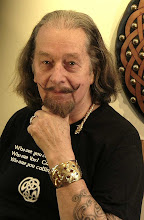 The map from the National Geographic May 1977 gives a perfect overview of all the peoples of Europe that are considered to be of Celtic origin.It also shows many of the artifacts had been uncovered up until then. As archeaology continues in many places all over Europe, more and more is coming to light.The Hochdorf princely grave site being one, and the discovery of the body of "Otzi" in high Alps of Austrian- Italian border has given us a much clearer insight into who and what these people were and how they lived.
The map from the National Geographic May 1977 gives a perfect overview of all the peoples of Europe that are considered to be of Celtic origin.It also shows many of the artifacts had been uncovered up until then. As archeaology continues in many places all over Europe, more and more is coming to light.The Hochdorf princely grave site being one, and the discovery of the body of "Otzi" in high Alps of Austrian- Italian border has given us a much clearer insight into who and what these people were and how they lived.
More currently it has been my privelege to meet with some of the more reknown Celtic Artist of the 20th century.In alphabetical order Courtney Davis, whom I met for the first time at Scrif Celt in London,and the on another occasion we met during the "Work of Angels" exhibition at the British Museum at the time that we both met Janet Backhouse, author of "The Lindisfarne Gospels". And again in Cornwall at the Royal Swanery near Abbotsbury after visiting Maiden Castle, one of the largest Celtic hillforts in the U.K.You can check out Courtney's art in the many books that he has published by Blanford Press.
Next is Jim Fitzpatrick, whose art I fell in love with many years before I met him.Posters and cards used to abound in many stores along Oxford street in London. However it was the books that he published through Paper Tiger, a division of Dutton Books, that really caught my attention. "Erin Saga", "The Book of Conquests" and "The Silver Arm" making reference to "Nuada" a Celtic hero who lost his arm in a battle and then had an artificial arm made.
The image you see here is from one of the most famous of his books, "Celtia",in this book you can clearly see how Mucha influenced him."Macha" and "Morrigan" are not unlike "Music" and "Poetry" both from Mucha in 1898.The Art Nouveau is replaced with some very intricate Celtic art work and faces from Celtic mythology. In the same book is a cover for a record album for Alen Stivell with his harp. Then "Thin Lizzy" with" Johnny the Fox and a real break from tradition with Jailbreak also for "Thin Lizzy" A clear indication of a definite evolution of art styles.I'll come back to Alan further on in my disertation.

Earlier on in one of my first 'posts' I made mention of Aidan coming into my shop and inviting me to join his Celtic Art classes. I have to say that along with George Bain, he has been the strongest influence on my development with Celtic art. Since he lived in Vancouver like myself, it was a natural that I should attend his classes for quite a period of time. Upon reflecting on this period I find I have some of the very early class notes that Aidan gave his students.The original "Coracle" Vol.1 #1 dates from January 1983 typed in 8.5x5.5 inch carried on till the following year in Vol.2 when he started to do the lovely hand scripted Coracles that eventually evolved into the series on Celtic art that were published by Thames and Hudson.
On a couple of occasions I was priveleged to carry the original works for delivery to T&H in London. The last one that I took over, I was allowed to add a punctuation mark to one of the pages. Not unlike the feeling that I got when I took my children on a hike through Germany and we stopped at the Gutenberg Museum in Mainz and was asked to press one of the pages using the press that was used to create the Gutenberg Bibles.

Last but not least, as the music of Alan Stivell plays in the background,I recall the Celtic Festival in Vancouver, July 6-8-1990. I had the pleasure of hosting Alan's visit whilst he was here. On a subsequent occasion he and his wife played host to Gretchen and I while we were in France. We had a personal tour of Rennes and the Brociliande Forest, from whence Lancelot is said to hail.



No comments:
Post a Comment